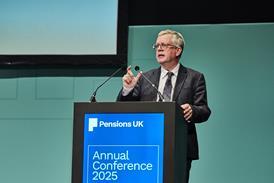If someone on average earnings had started saving 5 per cent of his pay in 2000 and invested it in UK equities, he could have accumulated a whopping £65,000 by now.
That is enough to buy a pension of around £2,200 a year for a 65-year-old man, with increases and a spouse’s pension.
If he had been lucky enough to be in a defined benefit pension scheme instead and paid the same amount as contributions, he would have a pension of £5,500 a year , with his employer paying the extra cost.
It would be fair to allow everyone the same savings, remembering that we repeatedly increased benefit levels when times were good
Even with investment returns of more than 11 per cent a year over the period, he would still get two-and-a-half times the benefit from a DB scheme than just from his own savings.
In the UK, we have 6,000 DB schemes with 11m members, including 4.3m pensioners already receiving a regular income from their schemes.
If schemes fail, the Pension Protection Fund provides a valuable safety net, with more than 230,000 people covered so far. And although the benefits payable are then reduced slightly, members of those schemes typically still get around double what their own contributions could have provided.
So members get a great deal from DB schemes, and the Pensions Regulator tells us that UK companies can afford to pay the bill.
However, I am not completely convinced about that, as some employers are really struggling – including the charity sector for example. There is flexibility in funding though, so I am happy to agree that there is no systemic failure here.
Allow CPI and standard benefit structures
The government’s DB green paper has struck the balance right with a genuine consultation on possible enhancements to a system already pretty robust and hugely beneficial for society. Two options are worth highlighting.
First, some employers are still stuck with funding retail price index increases because of a historical accident in the specific wording in their scheme rules, while others, including the state, were allowed to move to the consumer price index. It would be fair to allow everyone the same savings, remembering that we repeatedly increased benefit levels when times were good.
Second, facilitating conversion of multiple, complicated tranches of benefits to a single, simple, standard structure, of equal expected value, would allow schemes to slash administration costs.
Schemes could then easily band together for administration and investment without any need to legally merge the schemes, with the cost savings redirected to actually pay for the promised benefits.
Hugh Nolan is president of the Society of Pension Professionals and director at consultancy Spence & Partners






















